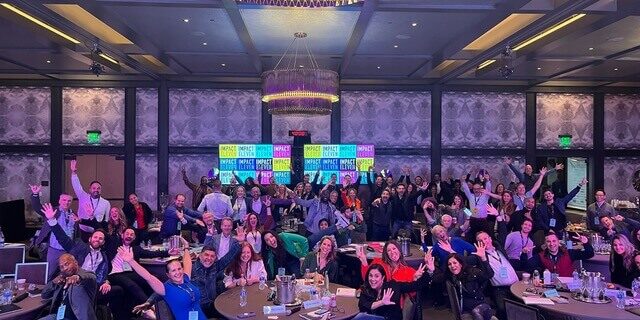
When it comes to employer branding, there’s no one who knows his stuff better than Brett Minchington. Brett is the founder of Employer Brand International, a company dedicated to advancing the science and practice of employer branding through training, research, consulting, events and publications.
He has just released his third in a series of books on the subject. Employer branding and the new world@work explores how companies around the world are managing the challenges and opportunities that come with an increasingly connected, mobile, social global workforce.
I’ve known Brett for nearly ten years and worked with him through Employer Brand International and recently got the chance to catch up with him about his new book and the themes that are driving employer brand strategy for companies around the world. Brett shared four employer branding themes he’s seeing globally.
Employer Branding Is Not Just an HR Issue
One important distinction that Brett makes clear upfront: employer branding is not an HR tactic. It’s a core business strategy. Companies who find success look at how their employer brand strategy fits into their organizational goals. Good employer brand strategy requires teamwork across functions, including HR, marketing, communications, IT and legal. If your employer brand strategy conversation isn’t happening beyond the talent acquisition team, there’s a problem.
And, for companies with employees around the world, a major challenge is keeping a consistent brand globally while at the same time empowering leaders locally.
Good Branding Strategies Start With the Basics
No matter what your strategy or your employee demographics, the best place to start is with the basics. There is no silver bullet. When you’re defining your employer brand strategy, first understand your goals. Know what you’re trying to achieve, then find a direction and stick to it. Look ahead at where you want to be in one, two, and three years, and develop strategies to keep you focused on the task. Finally, make sure you communicate your goals, strategy, and tactics with internal and external stakeholders.
Educating Senior Leaders Is an Important Step Toward Winning Buy-In
Employer branding is still a relatively new discipline. I asked Brett how employer branding leaders can win approval and buy-in from the C-suite. His answer: education. He knows that a common response from leadership is “we don’t have the budget for that.” The antidote to that logic: educate your senior leaders on your plan. Build a better business case, conduct an internal audit to decide where to start, and then educate your leaders about the basics. And, establish metrics that will gauge your success, and keep the C-suite informed about your progress. Employer Brand International recently launched a Certificate in Employer Brand Leadership to address these gaps and develop stronger leadership capability in employer branding around the world.
Customers and Employees Expect Authenticity
I write and speak often about the experience economy. Brett sees some very clear effects of our experience-driven culture, in which everyone now expects high-quality, authentic interactions with companies. When customers (or employees, or prospective employees) don’t see openness and authenticity from a company, there are negative side effects.
People inside brands are becoming more visible, telling positive stories about their organizations. By the same token, it’s very easy for disgruntled employees and customers to share their own, negative, stories about companies online.
Companies should have a clear value proposition for candidates and employees about what it’s like to work at the company, and invest in systems and processes to communicate that consistently. And, every brand’s social media strategy should include well-defined processes for responding to negative feedback (from customers, employees or candidates). We’ve all seen big companies’ Facebook pages get hijacked by negative commenters. When the company doesn’t respond to negative feedback, it’s a missed opportunity to reframe the conversation.
The video below provides an introduction to Brett’s employer branding message.








![[RYAN] Featured_Why Human-Centered Leadership Is the Future of Growth [RYAN] Featured_Why Human-Centered Leadership Is the Future of Growth](https://ryanestis.com/wp-content/uploads/bb-plugin/cache/RYAN-Featured_Why-Human-Centered-Leadership-Is-the-Future-of-Growth-1024x538-panorama-78e9dc1762c564216c0e9d2780c005b1-.jpg)

